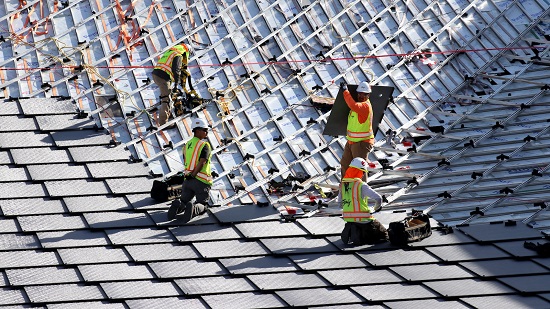 Saturday, October 5, 2024
Saturday, October 5, 2024  Saturday, October 5, 2024
Saturday, October 5, 2024 
Google’s newest office buildings in Mountain View, California are covered in silver scales. Some 90,000 squares ripple across four rooftops, near the tech giant’s headquarters, each overlapping slat a solar panel. Once operating next year, they should be able to meet roughly 40 percent of the four buildings’ electricity needs.
These “dragonscale” rooftops are perhaps the most eye-catching example of Google’s larger climate goals, which involve using only carbon-free energy at its nearly two dozen data centers and 70 offices worldwide by 2030. Google says the unique installations might do more than limit emissions at its new Bay View and Charleston East offices. They could also pave the way for buildings across the country to adopt the reptilian design — if dragonscales can overcome the same barriers in the way of other novel solar technologies.
The idea is “to kickstart this market in the U.S. by showing it can be done,” said Asim Tahir, who leads Google’s renewable energy strategy, in an interview with Grist. The four solar arrays will have a combined installed capacity of 7 megawatts, or enough to power roughly 1,800 average homes in California.
Google’s initiative arrives as engineers and building developers worldwide are trying to transform homes, offices, and factories from energy hogs into energy-efficient properties. In 2019 — before the pandemic disrupted office life and everything else — buildings churned out a record level of energy-related carbon dioxide emissions, accounting for 28 percent of the global total, according to the Global Alliance for Buildings and Construction. Residential and commercial buildings continue drawing electricity from carbon-intensive grids and burning natural gas for heating and cooking.